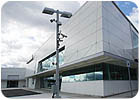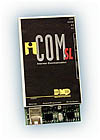
Today’s alarm systems that use the Internet protocol (IP) for communication with the central monitoring station represent only a small fraction of total systems. But that’s beginning to change. In this article, we look at six companies that are successfully using IP alarm transmission to fill a variety of needs — from providing line security to solving problems involved with monitoring systems for customers who have converted from conventional phone service to voice over IP.

IP for Every Installation
All of Smart Interactive Systems’ customers have a broadband connection. Any time a customer doesn’t already have one, Smart Interactive installs one to support the video surveillance equipment that is included with every system the College Point, N.Y.-based security dealer installs. “All of our alarms are fully integrated with video,†explains Bill Schlesinger, vice president of operations for Smart Interactive. “Every camera is associated with an alarm point.â€As an added differentiation point, Smart Interactive also installs an IP transmitter with digital dialer and cellular backup on every job. “It gives us a good form of line security and lets us provide constant supervision anywhere,†notes Schlesinger.
Smart Interactive focuses exclusively on commercial accounts, which include car dealerships, banks and general office buildings. The company uses IP transmitters and control panels from Bosch Security Systems and operates its own central station.

Fire Alarm Transmission
Scarsdale Security of Scarsdale, N.Y., installs and monitors a lot of fire systems. Until IP alarm transmission came along, one of the requirements the company had to meet was to provide two dedicated phone lines for any digital dialer connected to a fire system. The idea was to help ensure that communication got through by providing a backup in the event that one of the lines went down.Today, however, some fire authorities will allow an alarm company to use an IP transmitter connected to a high-speed data link in place of one of the phone lines — and the second phone line does not have to be dedicated to the alarm system. For customers that already have a high-speed data connection, this can provide significant cost savings, notes Drew Chernoy, Scarsdale Security’s marketing manager.
Another advantage of IP transmitters is that because they are connected to an always-on high-speed data line, rather than a conventional dial-up phone line, it’s a relatively simple and economical process to program the transmitter for frequent check-ins with the central station. To provide a further level of redundancy, Scarsdale Security has Internet connections from two different Internet service providers into its central station. As Chernoy explains, “They use two separate routes down different streets and come off of different poles into our building, just as we do for telephone lines.â€
Customers that already have a fire system based on redundant dedicated dialer connections can sometimes be converted by adding an IP transmitter module to the existing control panel, but some customers opt to upgrade to a brand new control panel with integrated IP transmission capability. Noting that many large corporate customers are accustomed to working with a particular one of the largest security equipment manufacturers, Chernoy says Scarsdale Security uses IP transmitters and control panels from Honeywell Security (Syosset, N.Y.) and Bosch Security Systems (Fairport, N.Y.), as well as DMP (Springfield, Mo.).
Scarsdale Security also uses IP transmitters for some security systems, where the transmitters can provide extra security and convenience for commercial customers who are accustomed to only checking the communications link at opening and closing. “We pitch that we’ll know about any system trouble sooner than the end of the day when the manager is trying to close and go home,†Chernoy says.
Scarsdale Security now uses IP transmission for about 20 percent of its core commercial market. That percentage has increased dramatically over the past two years and continues to grow, Chernoy says.
4 Tips for Installing IP-Based Alarm Systems
1. Backup power. Because high-speed data connections, unlike phone lines, rely on premises-based power, it’s critical to provide backup power at the customer premises, “You have to have a UPS and you have to ensure that no one can unplug it,†notes Drew Chernoy, marketing manager for Scarsdale Security of Scarsdale, N.Y. “You have to establish a relationship with whoever does IT for the customer and make them understand that this wire is special.â€2. Data service providers. Dealers installing IP-based systems, particularly those operating their own central stations, must be prepared to work closely with data service providers to troubleshoot any transmission problems with the data connections. “You have to become as knowledgeable about IP as central station managers were about things like long-distance echo cancellation and Watts lines. There’s a huge number of unregulated people in the way between you and your customer. It’s comforting to us that dialer backup is required because it’s really a much more complicated troubleshooting process when the problem is out there in the public data network.â€
Many ISPs alert customers in advance to planned network outages. Be sure to log this information, and recognize that you are likely to get a spate of nuisance alarms at that time.
3. Sufficient switch/ router ports. An IP alarm transmitter typically needs its own port on the customer’s switch/ router. If all of the ports are already taken, it may be necessary to upgrade to a higher capacity switch/router.
4. Firewall concerns. Some customers may have firewalls set up to protect their data networks. “We have to go through the firewall in some cases,†notes Bill Schlesinger, vice president of operations for Smart Interactive Systems of College Point, N.Y. “It takes our network administrator working with their network administrator. Sometimes it takes a bit longer, but not much longer.â€

High-security Intrusion Protection
Just as IP transmission is gaining recognition as a viable form of redundant communications for fire systems, it is also gaining similar recognition for high-security intrusion protection. One company that uses it for that purpose is Devcon Security Services of Hollywood, Fla. “This is UL listed for high-security and we do a lot of that kind of work,†notes Roy Pollack, Devcon operations manager.Until a year ago, Devcon relied primarily on two-way radio for its high-security work. But for jobs where installers were unable to reach two radio towers, the company began using digital dialers with IP transmitters from Honeywell Security as a backup, which Devcon monitors from its own central station.
Today, the company uses IP transmission for about 5 percent of its commercial jobs. But Pollack expects that percentage to grow. “It’s getting to be that IP will be the preferred transmitter,†he says. “The equipment costs a bit more, but there is a savings on labor because you’re not moving antennas and getting on the roof. Also, you’re not paying a third-party fee for towers.â€
The main drawback to IP transmission, Pollack says, is that it can create nuisance alarms when there is a problem with the Internet service provider’s network — although he believes the Internet is becoming more reliable. He adds that not all customers have a broadband connection, and when they don’t, radio will continue to be the preferred transmission choice.
Another company that uses IP transmission for high-security installations is Alarm Detection Systems of Aurora, Ill. “Twenty-five percent of our customers have some kind of supervised connection,†notes ADS vice president Ed Bonifas. For new high-security installations for customers that have high-speed data connectivity, ADS’s preferred choice is to use IP transmission with long-range radio or digital dialer backup, he says. One of the reasons Bonifas prefers to use IP for the primary transmission path is that, in comparison with long-range radio, the IP transmitters can communicate more information.
School districts may be a particularly good candidate for IP alarm transmission, Bonifas believes. “Many schools have spent hundreds of thousands of dollars to create a district-wide Internet that can be immediately leveraged,†he says. “The customer is already spending the money. This can help in giving them a payback.â€
ADS, which operates its own central station, uses IP transmitters from DMP, Bosch Security Systems and Honeywell Security.

Co-existing with VoIP
Another reason some security dealers use IP transmitters is to address the problems that arise when customers replace their conventional phone service with Voice over IP (VoIP) service. Today’s VOIP offerings operate over a broadband data connection and typically provide customers with unlimited long-distance calling within the United States for a flat monthly fee. But they can be incompatible with the communications formats used by digital dialers — and unlike conventional phone service, they can become inoperable during a power outage.Because IP transmitters are designed to work over a broadband connection, they do not face the communications problems that traditional dialers face when communicating over a broadband line. As long as local backup power is provided, some alarm dealers view them as the best solution for customers who make the switch to VOIP.
“We’re finding a lot of people converting to VoIP residentially and we feel compelled to make sure they understand that the best alternative for alarm transmission will be IP-based,†notes Daniel McKimm, president of ProTech Security of North Canton, Ohio.

the landline is down, the IP transmitter won’t get through,†McKimm says.
Although most customers opt for a cellular solution, ProTech has converted some customers to IP. “One of the advantages of IP is the speed of transmission,†McKimm notes. “A digital dialer will take a longer time to dial up the central station. IP is almost instantaneous.â€
ProTech uses DMP for its IP transmitters and uses Security Associates of Arlington Heights, Ill., for monitoring.
Another security dealer that recently installed its first IP transmitter to address concerns related to VoIP is All-Safe Fire & Burglar Alarm of Florida, N.Y. The company put in the transmitter for a customer with a newly constructed home that its installers had pre-wired. While installers were at the site putting in some wireless transmitters to accommodate windows that were not included in the original design, they saw a Cablevision truck drive up. “We noticed them putting in a black modem box,†explains All-Safe CEO Robert Merrihue.
An All-Safe representative discussed the situation with the customer. “We told him either he had to go through an Internet module or he had to sign off that he would not hold us liable if the system won’t communicate,†Merrihue says.
All-Safe charged the customer about $200 extra to add an IP transmitter from Honeywell Security, which is monitored by Nationwide Digital Monitoring of Staten Island, N.Y., via a link through Honeywell’s AlarmNet monitoring station. “We’ve had zero problems,†notes Merrihue, adding that the system is programmed to signal trouble by day and alarm by night if it loses communication.
For More Information about IP Alarm Transmitters
Bosch Security Systems(800) 289-0096
www.boschsecurity.us
DMP
(800) 641-4282
www.dmp.com
Honeywell Security
(800) 467-5875
www.honeywell.com/security